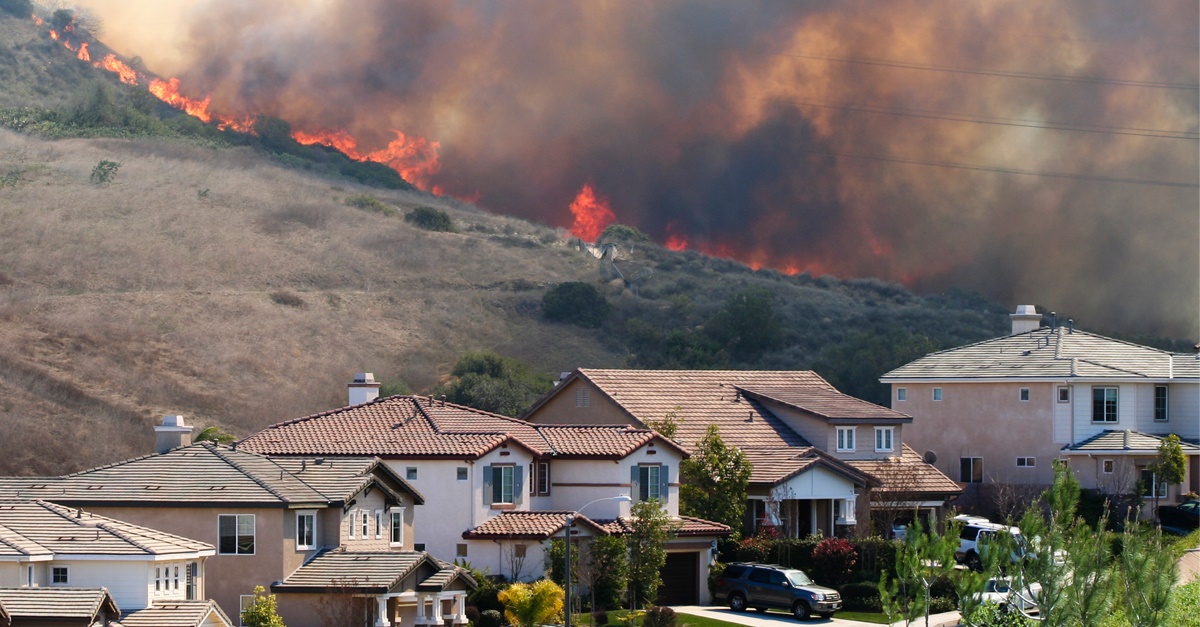Casualty Brokers Offer Creative Solutions for Contractor Liability Coverage
In 2021 more than 58,000 wildfires burned more than 7.1 million acres in the United States, according to the National Interagency Fire Center (NIFC) and, in California alone, more than 8,700 fires burned approximately 2.6 million acres, according to CAL Fire and the U.S. Forest Service.
The frequency and severity of these wildfires are on the rise, a situation attributed to the combination of poor vegetation management coupled with global heating and ongoing drought.
Drought kills the vegetation surrounding power lines and power sources, creating a perfect opportunity to spark a fire. Proper vegetation management, including the removal of dead and dying trees around utility equipment, is the most effective risk-management technique for combatting fires.
Cutting down trees sounds like a simple solution, but this type of specialized vegetation management must be performed by skilled arborists and other contractors who meet the specific contract requirements of the state’s utility companies. One such requirement is that hired contractors carry wildfire general and excess liability insurance coverage.
Unfortunately, this type of insurance coverage is not affordable (and sometimes not available) to smaller contractors who would otherwise fulfill the utility’s requirements, creating a shortage of the qualified skilled labor needed to improve vegetation management.
Why is Wildfire Liability Insurance Difficult to Obtain?
Utility company contracts require anywhere from $10 million to $100 million or more of liability coverage for a contractor performing vegetation management or utility line and power line clearing work. For example, a typical contract requirement for primary auto limits is $1 million primary general liability limits of $1 million per occurrence/$2 million aggregate and then a minimum of $10 million in excess liability limits above the primary.
Challenges in the excess liability insurance marketplace are already well known. Insurers have not been able to achieve their targeted rates of return over the past five to six years which has resulted in rising rates and shrinking capacity. Additionally, social inflation, nuclear verdicts, claims inflation, record cyber events, natural catastrophes and a global pandemic have all led to an increasingly hardening excess insurance market.
Admitted markets don’t want to take on wildfire risk, which leaves the exposure to fall into the non-admitted marketplace. There are few non-admitted markets, however, that are willing to offer capacity for excess liability wildfire. Despite the market’s function to fill the need for coverage on catastrophe-prone risks and coverage for risks that are declined by the standard admitted carriers, available capacity is either insufficient or too expensive for many insureds.
Non-admitted carriers willing to offer even a few million in excess coverage for wildfire do so on a “net” basis, providing coverage outside of their reinsurance treaties, and will charge large rates on line typically ranging from 20% to 50%.
As a result, only the largest contractors can afford to purchase wildfire coverage, leaving smaller contractors with few choices. Some rely on the utility companies to reimburse them for insurance costs—a difficult ask when utilities are already facing balance sheet scrutiny.
In some cases, contractors have purchased excess liability coverage that excludes wildfire but then still have insurance agents that file Certificates of Insurance with utility companies that don’t mention exclusions for wildfire. The utility companies typically don’t ask for full copies of policies from the contractors they hire, so they are often allowing contractors to perform work who are (unknowingly) uninsured for wildfire. This misrepresentation of coverage by a small group of agents creates potential Errors & Omissions issues for the agents and brokers who placed the excess coverage that contained wildfire exclusions.
For First Quarter 2022, we expect to see only limited easing on rates and capacity in the excess liability market for wildfire. A small handful of carriers are reconsidering offering the coverage, but quotes are very dependent on specifics of any particular risk.
We Can Help
Our experience with wildfire placements means we can be creative in our approaches to obtaining proper coverages.
For example, we can look at underwriting geographical areas based on the actual work contractors are performing versus assuming all contractors are doing the most dangerous work. Right now, the position from most markets is they don’t want any wildfire exposure, no matter what the contractor is doing. The risk exposures, however, can be vastly different between a crew that is doing tree removal around dangerous power lines and one that is simply removing debris from an urban area.
There are nuances to each risk that can be explored. Typically, looking at geographical areas has been a catastrophe technique used in property underwriting, but it can also be applied to liability.
We have also seen some retail brokers offering creative captive options on a primary basis that allow smaller contractors to share risk among a larger group.
Obtaining coverage for risk mitigation techniques like vegetation management gets us all one step closer to lowering the risk for wildfires. Contact your Amwins casualty broker today for assistance with wildfire placements.


